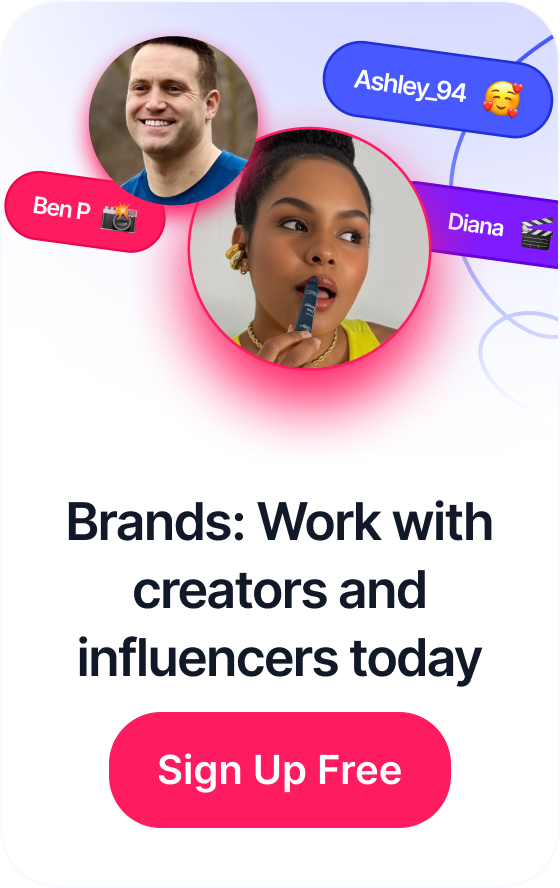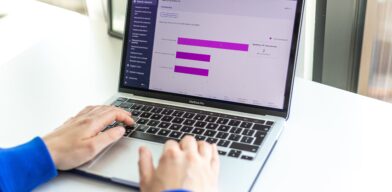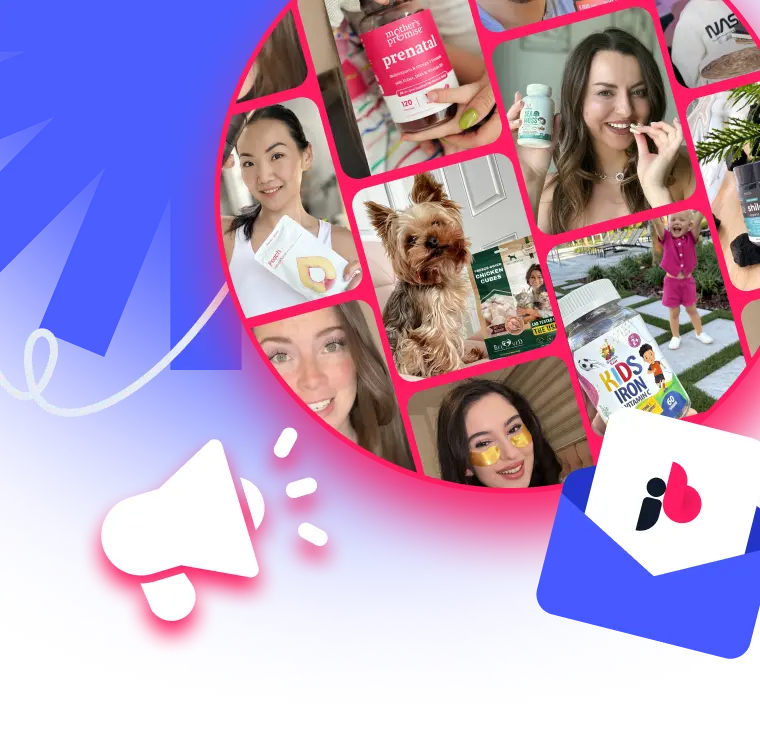 The Shopify Seller’s Guide to Instagram Advertising: Boosting Online Sales
The Shopify Seller’s Guide to Instagram Advertising: Boosting Online Sales
Facebook ads for Shopify are targeted advertising tools integrated with the Shopify platform. They are significant for reaching over 2.8 billion active users, offering vast market exposure. These ads help brand owners effectively promote and sell products by leveraging user data and customization options.
This article guides us through advertising goals for Shopify Facebook ads. Next, it provides insight on how to craft compelling ad copy for Shopify Facebook ads as well as how you can analyze audience insights for Shopify Facebook ads. Lastly, we’ll discuss how to effectively perform A/B testing for Shopify Facebook ads and answer some frequently asked questions (FAQs).

Table of Contents
10 Advertising Goals for Shopify Facebook Ads
Shopify Facebook Ads offer a versatile range of 10 advertising goals: Brand Awareness, Lead Generation, Traffic Increase, Conversion and Sales, Customer Retention, Product Launch and Promotion, Market Research and Feedback Gathering, Enhancing Customer Engagement, Upselling and Cross-Selling, and Geographical Expansion, providing a comprehensive toolkit for diverse marketing objectives.
1. Brand Awareness
Advertising Goals for Shopify Facebook Ads aim to increase brand visibility and recognition among potential customers. By targeting a broad audience, these ads familiarize users with the brand, creating a strong brand image. This exposure is crucial for new Shopify stores, making them memorable to potential customers. Increased brand awareness often leads to higher traffic and customer loyalty, benefiting the Shopify store’s long-term growth.
2. Lead Generation
The goal here is to collect information from interested customers, like emails or contact details. Shopify Facebook Ads designed for this purpose use engaging content and calls-to-action to encourage users to sign up or show interest. This strategy helps Shopify stores build a database of potential customers, which is invaluable for direct marketing and personalized campaigns. Effective lead generation through these ads can significantly boost conversion rates and sales.
3. Traffic Increase
This goal focuses on driving more users to the Shopify store’s website. Ads are optimized to attract clicks and direct users to the store. By increasing traffic, Shopify stores gain more opportunities to showcase products and convert visitors into customers. This is particularly beneficial for new or lesser-known stores needing to establish an online presence and customer base.
4. Conversion and Sales
The primary aim here is to increase actual sales and conversions on the Shopify store. Ads are specifically targeted to audiences with a higher likelihood of purchasing, using data analytics and user behavior. By directly contributing to the store’s revenue, these ads are a vital tool for short-term sales boosts and long-term business sustainability.
5. Customer Retention
This goal targets previous customers to encourage repeat purchases. Shopify Facebook Ads under this category focus on loyalty programs, special offers, and showcasing new products. Effective customer retention ads increase the lifetime value of customers, turning one-time buyers into loyal brand advocates. This approach is essential for long-term profitability and brand strength in the competitive online marketplace.
6. Product Launch and Promotion
This goal involves using Shopify Facebook Ads to introduce new products or highlight specific promotions. The ads are tailored to generate excitement and interest, showcasing unique features or limited-time offers. This strategy is crucial for gaining quick market traction for new products, leading to an immediate increase in sales and market presence. Effective product launch campaigns through Facebook Ads can set the tone for a product’s success in the marketplace.
7. Market Research and Feedback Gathering
The objective here is to use ads to collect customer opinions and insights. Interactive ads that encourage user engagement, such as polls or surveys, are used. This approach provides valuable feedback for Shopify store owners, helping them to understand customer preferences and improve their offerings. By aligning products more closely with customer needs, stores can enhance satisfaction and loyalty.
8. Enhancing Customer Engagement
These ads aim to create a more interactive and engaging relationship with the audience. Strategies include content that encourages user interaction, like contests or user-generated content campaigns. Increased engagement strengthens the customer’s connection to the brand, fostering a sense of community and loyalty. This is particularly beneficial for building a strong social media presence and enhancing brand reputation.
9. Upselling and Cross-Selling
The goal is to encourage customers to purchase additional or complementary products. Ads might showcase products that complement items the customer has already shown interest in. This strategy increases the average order value and maximizes revenue from existing customers, making it a cost-effective way to boost sales.
10. Geographical Expansion
This advertising goal focuses on reaching new geographic markets or demographics. Ads are customized to appeal to the tastes and preferences of different regions or cultural groups. By expanding their market reach through targeted ads, Shopify stores can tap into new customer segments, diversifying their customer base and reducing market-specific risks.
Now that we’ve discussed the advertising goals for Shopify Facebook ads, let’s discuss how you can craft compelling ad copy for them.
15 Steps to Craft Compelling Ad Copy for Shopify Facebook Ads
Crafting compelling ad copy for Shopify Facebook ads is a strategic process that involves understanding your audience, highlighting your product’s unique features, and creating a narrative that resonates with potential customers.
Here are 15 steps to guide you through this process:
1. Identify Your Target Audience
Begin by understanding the specific demographics, interests, and needs of your potential customers. Consider factors like age, gender, location, and hobbies. This step is crucial because it ensures your ad copy resonates with the right people. For example, a Shopify store selling fitness gear would target health enthusiasts and gym-goers.
2. Highlight Unique Selling Points (USPs)
Determine what sets your product or service apart from competitors. This could be anything from superior quality, pricing, or unique features. Your USP should address a specific need or desire of your target audience. A Shopify store offering handmade crafts might emphasize their uniqueness and artisanal quality.
3. Craft a Compelling Headline
The headline is often the first thing people see. It should be attention-grabbing, clear, and relevant to your product. Use strong, action-oriented words. A successful Shopify store might use a headline like “Revolutionize Your Kitchen with Our Advanced Cookware!”
4. Use Persuasive Language
Incorporate words that persuade and influence your audience. Words like “exclusive,” “limited,” “guaranteed,” or “free” can be very effective. Ensure the language matches the tone and style of your brand. A luxury Shopify store might use sophisticated and elegant language.
5. Create a Sense of Urgency
Encourage quick action by suggesting that the offer is time-sensitive or in limited supply. Phrases like “limited time offer” or “while stocks last” work well. This technique can significantly boost conversion rates.
6. Use Testimonials and Reviews
Incorporate positive feedback from previous customers to build trust and credibility. Highlighting specific benefits they experienced can be very persuasive. A Shopify store selling skincare products might showcase customer before-and-after photos.
7. Include a Clear Call to Action (CTA)
Your ad should clearly state what you want the viewer to do next, whether it’s to visit your website, make a purchase, or sign up for a newsletter. Make it prominent and unambiguous. For example, “Shop Now to Enjoy Exclusive Discounts!”
8. Focus on Benefits, Not Just Features
Instead of just listing product features, explain how these features benefit the customer. For example, if you’re selling a smartwatch, don’t just mention the technical specifications; highlight how it can help in daily life, like tracking fitness goals.
9. Leverage Social Proof
Show that others are enjoying and recommending your product. This can be in the form of user count, celebrity endorsements, or media mentions. Social proof is a powerful influencer in consumer behavior.
10. Optimize for Mobile Viewing
Since many Facebook users access the platform via mobile, ensure your ad copy is concise and easily readable on smaller screens. Avoid long paragraphs and use bullet points if necessary.
11. Use High-Quality Images or Videos
Visuals are key in Facebook ads. Use high-resolution images or videos that align with your ad copy and effectively showcase your product. A Shopify store selling home decor might use aesthetically pleasing photos of their products in well-decorated rooms.
12. Address Potential Objections
Anticipate and address common objections or concerns your target audience might have about your product. This could involve offering a money-back guarantee or highlighting eco-friendly aspects.
13. Incorporate Storytelling Elements
People connect with stories. If possible, weave a narrative around your product that your audience can relate to. This could involve the journey of creating your product or how it can transform a user’s experience.
14. Test and Refine Your Ad Copy
Experiment with different versions of your ad copy to see what resonates best with your audience. Use A/B testing to compare different headlines, CTAs, or images.
15. Ensure Brand Consistency
Your ad copy should align with your overall brand voice and image. Consistency across all your marketing materials builds brand recognition and trust. Whether your brand is fun and quirky or serious and professional, your ad copy should reflect that.
Now that we know how to craft compelling ad copy for Facebook Shopify ads, let’s discuss how you can analyze audience insights.
10 Audience Insights to Analyze for Facebook Shopify Ads Success
Key performance indicators (KPIs) for Facebook Shopify ads are crucial metrics that help store owners understand the effectiveness of their advertising efforts.
Here are 10 essential KPIs, each explained in a clear, connected manner:
1. Click-Through Rate (CTR)
CTR measures the percentage of people who click on your ad after seeing it. It indicates how relevant and appealing your ad is to the target audience. A high CTR suggests your ad is engaging, while a low CTR may mean your ad needs more compelling content or better targeting. If CTR is low, consider refining your ad copy or creative.
2. Conversion Rate
This KPI tracks the percentage of users who take a desired action, like making a purchase, after clicking your ad. A high conversion rate implies your ad effectively leads to sales, while a low rate may signal issues with your website’s user experience or the relevance of your ad. To improve a low conversion rate, optimize your landing page and ensure it aligns with your ad’s message.
3. Cost Per Click (CPC)
CPC is the amount you pay each time someone clicks on your ad. It’s crucial for budget management. A lower CPC means more efficient use of your ad budget, while a high CPC can drain resources quickly. If CPC is high, you may need to adjust your bidding strategy or ad targeting.
4. Return on Ad Spend (ROAS)
ROAS measures the revenue generated for every dollar spent on advertising. A high ROAS indicates effective ad spending, while a low ROAS means your ads aren’t generating enough sales. To increase a low ROAS, review and refine your ad targeting and creative elements.
5. Cost Per Acquisition (CPA)
CPA calculates the cost of acquiring a new customer through your ad. A lower CPA is more desirable, as it means you’re spending less to gain a customer. If your CPA is high, reevaluate your ad targeting and the overall appeal of your offer.
6. Ad Impressions
This KPI counts the number of times your ad is displayed. High impressions mean your ad has broad reach, but they don’t necessarily translate to clicks or sales. If impressions are high but clicks are low, your ad may not be compelling enough to encourage action.
7. Engagement Rate
This measures interactions with your ad, like likes, shares, and comments. High engagement can increase your ad’s reach organically. If engagement is low, your ad might not resonate with your audience, so consider altering its content or creative approach.
8. Page Post Engagement (PPE)
Specific to Facebook, PPE tracks likes, comments, and shares on your ad posts. High PPE indicates strong audience interest, while low PPE suggests your content isn’t engaging. To improve low PPE, try using more engaging visuals or interactive content.
9. Quality Score
Facebook’s quality score assesses the relevance and quality of your ad. A high score can lower your CPC and increase ad exposure. A low score might mean your ad is not relevant to your target audience or is of low quality. Improving ad content and relevance can enhance your quality score.
10. Bounce Rate
This measures the percentage of visitors who leave your site quickly after arriving from your ad. A high bounce rate indicates that your landing page isn’t meeting user expectations. Improving your landing page’s content, speed, and usability can help reduce a high bounce rate.
Monitoring these KPIs helps Shopify store owners make informed decisions to optimize their Facebook ads, leading to better performance and increased sales. Now, let’s discuss how you can conduct A/B testing for Shopify Facebook ads.

15 Steps to Conduct A/B Testing for Shopify Facebook Ads
A/B testing, also known as split testing, is a method of comparing two versions of a web page or app against each other to determine which one performs better. Here’s a step-by-step guide to perform A/B testing for Shopify Facebook Ads:
1. Define Your Objective
Start by identifying what you want to improve in your Facebook ads. This could be increasing click-through rates, enhancing engagement, or boosting conversions. A clear objective will guide your testing and decision-making process.
2. Choose the Element to Test
Select a specific element of your ad for testing. This can be the image, headline, text, call-to-action (CTA) button, or ad format. Testing one element at a time ensures clear results.
3. Create the Control and Variation
Develop two versions of your ad: the original (control) and the modified version (variation). The variation should only differ in the one element you’ve chosen to test.
4. Ensure Audience Segmentation
Divide your audience into two random, yet similar, groups. Each group should be exposed to only one ad version. This segmentation is crucial for accurate results.
5. Set Up the Test on Facebook
Use Facebook’s ad manager to set up your A/B test. Here, you’ll upload both ad versions and assign them to the different audience segments.
6. Determine Your Budget and Timeline
Decide on the budget for your test and how long it will run. A/B tests typically need a few days to a couple of weeks to gather significant data.
7. Monitor the Test Regularly
While the test is running, monitor it regularly. Check for any irregularities or technical issues that could skew the results.
8. Collect and Analyze Data
After the testing period, collect data from both ad versions. Analyze metrics like click-through rate, conversion rate, engagement, and cost per conversion.
9. Compare Results Against Your Objective
Compare the performance of both versions against your original objective. Determine which version better meets your goal.
10. Draw Conclusions
Interpret the results to understand why one version outperformed the other. This might reveal insights into your audience’s preferences and behaviors.
11. Implement the Findings
Use the insights gained from the A/B test to update your ad strategy. If the variation performed better, consider adopting its changes in future ads.
12. Plan Further Tests
A/B testing is an iterative process. Plan further tests based on your learnings to continuously optimize your ads.
13. Document Your Findings
Keep a record of your tests, results, and the changes made. This documentation helps in understanding the long-term performance trends and decision-making for future campaigns.
14. Communicate Results to Stakeholders
If applicable, share the results and insights with your team or stakeholders. This helps in aligning marketing strategies and decisions.
15. Stay Updated with Facebook’s Ad Guidelines
Regularly update your knowledge of Facebook’s advertising guidelines. Compliance ensures your ads are not only effective but also meet the platform’s standards.
Each step in this guide helps in meticulously crafting and executing an A/B test, ensuring that every decision made enhances the performance of your Shopify Facebook Ads. Now, let’s discuss some frequently asked questions (FAQs).
Frequently Asked Questions (FAQs)
What are the key metrics to measure success in Shopify and Facebook Ads?
The key metrics to measure success in Shopify and Facebook Ads include click-through rate (CTR), conversion rate, cost per click (CPC), and return on ad spend (ROAS). These metrics, as performance indicators, help assess the effectiveness and efficiency of ad campaigns, comparing them against industry benchmarks or previous campaigns.
How can I analyze the performance of my Shopify Facebook Ads?
To analyze the performance of Shopify Facebook Ads, track and evaluate metrics such as CTR, conversion rate, engagement rate, and ROAS. Utilize Facebook’s ad analytics tools to gain insights into how your ads are resonating with your target audience and driving sales for your Shopify store.
What strategies can be adjusted to improve Shopify Facebook Ad performance?
To improve Shopify Facebook Ad performance, consider adjusting strategies like targeting criteria, ad creative elements (such as images and copy), and budget allocation. Experimenting with different ad formats and conducting A/B testing can also lead to better ad engagement and effectiveness.
How often should I review and adjust my Shopify Facebook Ad strategies?
Review and adjust your Shopify Facebook Ad strategies at least monthly. Regular analysis allows for timely adjustments based on ad performance metrics, market trends, and consumer behavior, ensuring ongoing optimization and relevance of your ad campaigns.
Can A/B testing enhance the performance of Shopify Facebook Ads?
Yes, A/B testing can significantly enhance the performance of Shopify Facebook Ads. By systematically comparing different ad variants, you can identify which elements resonate best with your audience, leading to improved engagement, conversion rates, and overall ad effectiveness.
What role does audience targeting play in Shopify Facebook Ads success?
Audience targeting plays a crucial role in the success of Shopify Facebook Ads. Effective targeting ensures your ads reach the most relevant and potential customers, improving engagement, conversion rates, and ROI. It involves selecting demographics, interests, and behaviors that align with your ideal customer profile.
Conclusion
In conclusion, the synergy between Shopify and Facebook Ads offers businesses a powerful platform for growth. By analyzing the success of their campaigns and continuously adjusting their strategies, companies can tap into the vast potential of e-commerce and social media advertising. Adapting to changing trends and customer behaviors is key to achieving long-term success in this dynamic digital landscape.








